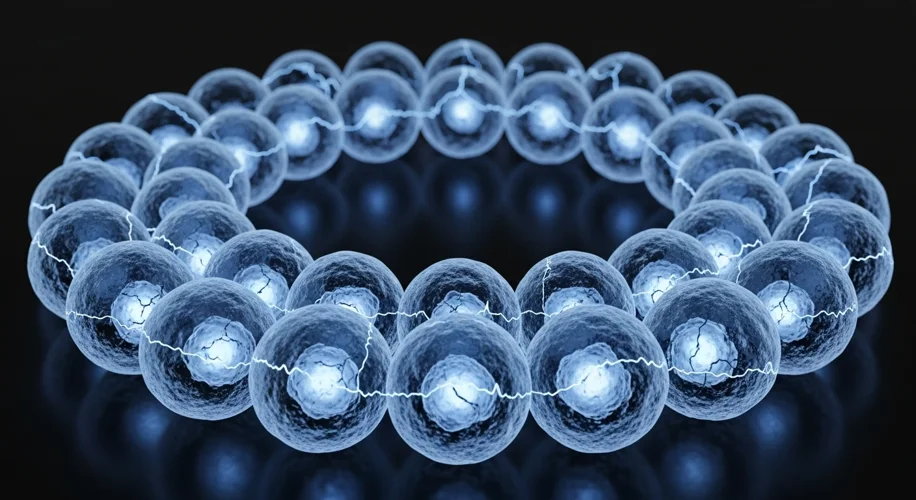Did you know that most living organisms have an internal clock? These biological clocks, also known as circadian rhythms, dictate everything from when we feel sleepy to when plants bloom. They’re fundamental to life as we know it. Now, researchers have taken a fascinating step towards understanding and replicating these natural timekeepers.
Recently, scientists have shown that they can create tiny, artificial cells that accurately keep time, much like the daily rhythms found in living organisms. This is a really exciting development because it allows us to study biological timing mechanisms outside of complex living systems.
Think about it: even single-celled organisms like bacteria or yeast have internal cycles that help them survive and thrive. These cycles are crucial for adapting to predictable environmental changes, such as the daily cycle of light and dark or seasonal shifts.
What are these artificial cells?
These aren’t cells in the traditional sense, but rather complex molecular machines designed to mimic cellular functions. Researchers have engineered specific sets of molecules, often proteins, that can interact in a cyclical manner. These interactions are programmed to occur at regular intervals, creating an artificial biological clock.
How do they work?
Imagine a simple chemical reaction that produces a substance. This substance then triggers another reaction that, in turn, inhibits the first reaction. This kind of feedback loop can create oscillations, or cycles, in the concentration of molecules. By carefully designing these molecular circuits, scientists can create rhythms that can last for hours or even days.
The accuracy of these artificial clocks is quite remarkable. They can often maintain their timing over extended periods, mirroring the robustness of biological clocks found in nature. This precision is key to their potential applications.
Why is this important?
Understanding biological timing is vital for many areas of science and technology.
- Understanding Life: It helps us unravel the fundamental principles governing how life adapts to its environment. Why do some cells divide at specific times? How do plants know when to flower?
- Biotechnology: These artificial clocks could be used in various biotechnological applications. For instance, they might be programmed into engineered microbes to perform specific tasks at precise times, such as producing a drug or cleaning up a pollutant only during certain hours.
- Medicine: Many human diseases are linked to disruptions in our circadian rhythms, like sleep disorders or metabolic issues. Mimicking and understanding these rhythms could lead to new therapeutic strategies.
- Environmental Clues: For me, working with climate modeling, understanding natural rhythms has always been key. While these artificial cells are not directly related to climate modeling, the principle of internal timing mechanisms is a core concept in how ecosystems function and respond to environmental cues. It makes me think about how human activity, like artificial light at night, can disrupt natural rhythms, and how much we still have to learn about the delicate timing within biological systems.
This research into artificial timekeeping cells is a testament to our growing ability to engineer biological systems. It’s a step forward in demystifying the intricate dance of life’s internal clocks and could unlock exciting new possibilities for the future.

